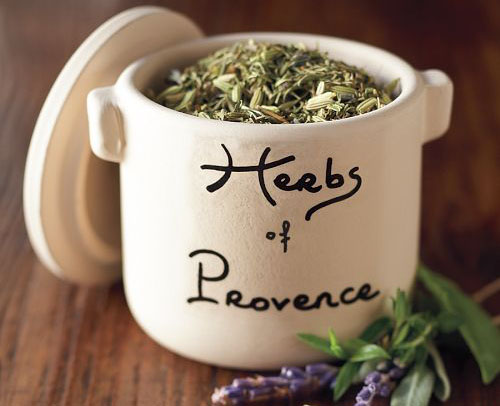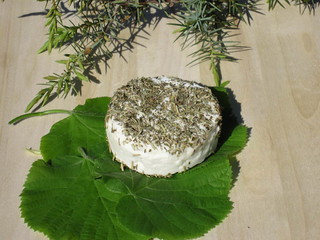Herbes de Provence: A French tradition, both old and new
If you had a grand-mère provençale and asked her about herbes de Provence, she would probably have replied “Qu’ est-ce que c’ est?”.
She would, of course, have cooked with the herbs she kept outside her kitchen door or gathered as she walked near the house, perennial plants that could thrive in hot, sunny locations and needed no watering. She traditionally used thyme, rosemary, savoury and sage, and like every cook with her own recipes, used these herbs by the handful when fresh and lesser amounts when dried.
But the herbes de Provence, which are now a ubiquitous combination of the dried herbs, did not exist by that name until the 1970s when it was formulated by spice wholesalers.
Dried and packaged, the herbs are now sold worldwide and in the markets of Provence in sachets, clay pots, or tins. Some may contain basil and oregano, which is also called marjoram, but these herbs were not traditional because they didn’t grow wild. Lavender flowers and fennel seeds are also sometimes added to the mix, but not by my Mamie.
Early Spring sage
Packaged dried herbs just don’t taste, well, as fresh as fresh herbs. If you have room for a window box or a few clay pots think of planting your own herb garden, or if you live in Provence, just take a walk and pick the herbs along the way. You can cook with them alone or in combination, just as Mamie did.
When combined, the herbs blend perfectly with fish and lamb. They are an integral part of ratatouille, the Provençal signature dish, and can be added to your own tomato sauce or used to perk up prepared sauces. The herbs can also be used alone. Sage, for example, is often used to flavor dishes with fatty meats like pork, or in pasta dishes as done by our Italian neighbours.
Mamie and her Provençal friends and relatives also used the herbs as natural remedies for everyday ills. Many people in the area still do.
Rosemary is known as an antiseptic and is used externally for hair and anti-aging products. It is also thought to help digestion and rosemary tea before bedtime or after a heavy meal is common in Provence.
A crop of rosemary
Thyme is packed with health-benefiting nutrients, minerals and vitamins that are essential for well-being. Thyme contains thymol, an essential oil that has anti-fungal and antiseptic characteristics and is used in the preparation of Listerine®. In Provence, infused thyme is given to people with head colds, sore throats or coughs.
Thyme in bloom
Savoury is known to be an anti-flatulent which was no doubt useful in the cold winters of Provence when chickpeas and beans were an important staple. Since Roman times, savory has had a reputation as an aphrodisiac. Summer savoury was said to increase sexual desire, winter savoury to decrease it. Guess which herb became the most popular!
Sage, or salvia, meaning to save, was one of the most important medicinal herbs of antiquity. There is a medieval proverb: “Why should a man die whilst sage grows in his garden?”. Sage tea is still used as a gargle for a sore throat or to strengthen the gums, and as a stomach tonic.
Before refrigeration reached Provence, many goat and sheep cheeses made from unpasteurized milk were coated with one or more herbs. The herbs were used for their antiseptic qualities; the delicious taste was an added benefit.
Goat cheese with herbes de Provence
Use your herbes de Provence for cooking or healing. Or, if far away from Provence, open your container for a whiff of the southern sun, even in the midst of a northern winter.
1 thekitchn.com
2, 3, 4 Laurence Bry
5 recettes-et-sante.blogspot.com











